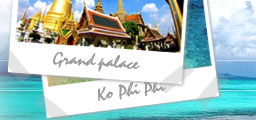Majestic Cultural Heritage
Thailand’s cultural heritage was influenced by ancient India when the Indian merchants and scholars set foot and gradually settled in Southeast Asia some 2,300 years ago. It continued for several centuries. Buddhist religion and popular myth are the most obvious examples. Much of Thailand’s royal tradition is also rooted in Indian culture.
Buddhism is thought to have first come to Thailand at Nakhon Pathom, While Indian concepts of divine kingship first took root in the Khmer empire. By the 6th century AD, many independent states were flourishing in the region we now know as Thailand. One of these was the Mon’s Dvaravati kingdom. Mon dominance over central Thailand has been diminished by the power of an expanding Khmer empire. Eventually, The Khmer became so powerful that they ruled the entire area. Only the southern isthmus where the Srivijaya civilization had taken root was unaffected.
Towards the end of the 13th century, Khmer power in this area waned and new kingdoms dominated by the Thai race developed, including the northern Lanna kingdom. Beginning by nibbling away at the perimeter of the Khmer empire at Sukhothai and in Lanna some 700 years ago, the Thai race later established the glorious court at Ayutthaya, and eventually Bangkok. Over the past centuries, many peoples, among them the Chinese, Arabs, Malays and Westerners, have contributed to Thailand’s cultural heritage.
Thailand’s majestic cultural heritage inherited over the past centuries was dominated or influenced by many kingdoms encompassing the area including the powerful Khmer. The remains of their cultural heritage can still be seen in many places through out the kingdom.
Khmer Kingdom
The best example of Khmer culture is at Phimai, some 60 kilometres northeast of Nakhon Ratchhasima. The old temple stands in the middle of the modern town. The outlines of the old fortified town can still be traced. It was strictly rectangular in plan, as were all Khmer settlements, and it was made doubly secure by placing it on an artificial island. The nearby Phanom Rung and Muang Tham sanctuaries are also two good examples. Other outstanding Khmer treasures in Thailand include the powerfully evocative sanctuary at Muang Singh in Kanchanaburi, and the imposing triple-spired strines at Lop Buri.
Dvaravati Kingdom
Davaravati culture was centred on the area between Nakhon Pathom, a littie- fortified town some 50 kilometers west of Bangkok, and UThong to the north. Its enduring emblem is Phra Pathom Chedi, the massive bell-shped Buddhist shrine with its golden spire at Nakhon Pathom. This is where Buddhism is believed first to have been taught in Thailand. The chedi, at 120.45 meters, is the tallest Buddhist structure in the world.
Lanna Kingdom
Founded by King Mengrai, the northern Lanna kingdom had an exciting mixture of cultures due to its diverse populations and mountainous location. The main division was between the farmers and townspeople of the valleys and the hill tribes of the valleys and the hill tribes themselves represent several very distinct ethnic stocks, so that a multitude of languages, customs, beliefs, architectures, diets, and styles of dress exist harmoniously side by side.
Sukhothai Kingdom
Sukhothai, some 480 kilometers north of Bangkok, was the capital of the first truly Thai kingdom. Its third king, the great Ramkhamhaeng, is credited with devising the Thai alphabet from ancient Mon and Khmer scripts. The kingdom is credited with producing the most sublime religious art and sculpture ever seen in Thailand, and for manufacturing the most perfect pottery and Buddha images. Sukhothai also developed the concept of the Thai town – set four squares on the plain and protected by triple walls and intervening moats. Thais pattern was so successful in terms of defense (it allowed more wall forts) and flexibility to match the terrain that it was never abandoned.
Ayutthaya Kingdom
Ayutthaya’s art and architecture was a delicate blend of Dvaravati, Khmer, Mon, Lawa and Khmer cultures. The city site at the heart of the riverine system of the lower Chao Phrayabasin was carefully chosen to allow a moated trapezoid plan and a water-borne way of life. Ayutthaya’s sister city, Lop Buri, just a short distance north. It shared in the capital’s splendour. One of Thailand’s greatest kings. Narai built a palace there that can still be seen. It was these two glorious cities that Europeans first saw.
This golden age of Thai culture also produced the exquisite architecture and decoration at Bang Pa-in, a royal summer palace on the majestic Chao Phraya River just south of the capital, as well as the elegance and grace of Thai classical dance and theatre. Unhappily, all these fabulous glories were sacked by a Burmese invasion in 1767. All that remains of 417 glorious years are the ruins you can see today. They are now a World Heritage site.
|













